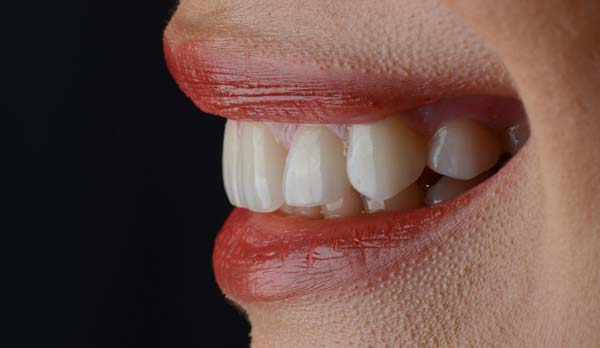What a Dental Restoration Can Do for Your Smile

Dental Restoration is a type of treatment used to improve teeth that are in bad shape due to injury, decay, or genetic imperfections. There are a number of dental restorations that patients can consider, however, it is ultimately up to a general dentist to make a recommendation and treatment plan. Most procedures aim to make improvements to a patient's smile. Keep reading to learn more about dental restoration.
Fixing your smile with a dental restoration
Outlined below are a few things that a dental restoration can do for your smile. This information can be helpful to review when looking into different treatment options.
Damage repair
Accidents and injuries occur, which can leave the teeth cracked, chipped, or broken. Dental restorations of any kind can be used to repair damaged teeth. When damaged teeth are repaired with a dental restoration, the patient's smile is much more likely to improve.
Correcting imperfections
Some people have imperfections in their teeth, which are unpreventable. However, with a dental restoration, imperfections can be addressed and even corrected. Imperfections may include divots, shorter teeth, thinner teeth, teeth that do not 100% align with their surrounding teeth, or misshapen teeth, all of which are treatable with dental restorations, such as crowns or veneers. In some scenarios, dental bonding can also be used.
Improving oral health
Dental restorations can also improve oral health in patients who have unhealthy teeth, thus improving their smile. When teeth are unhealthy, it often shows, meaning that they may appear discolored or brittle. Things like cavities, gum disease, or abscesses can leave one's smile looking unhealthy. Thankfully, dental restorations can be used to address these concerns. Teeth that are unhealthy respond well to dental fillings and crowns as they both involve the removal of infected parts.
Other things to know about dental restorations
The most common dental restorations include dental fillings, crowns, veneers, and composite bonding. Outlined below is a short explanation of each. It can be helpful to understand each dental restoration as it will provide a better understanding of the information above.
- Dental crowns: These cap-like coverings are used to completely seal a molar tooth after the infected tissue has been removed. Crowns are made of gold, ceramic, metal alloy, or composite resin
- Fillings: Dental fillings are made of gold, ceramic, silver amalgam, or composite resin. The chosen material literally fills the tooth once the infected areas have been removed
- Veneers: Thin shells like veneers work well to cover imperfections in the teeth that do not necessarily require the removal of infected areas
- Composite bonding: Dental resin can be used to cover minor chips, cracks, or stains, all of which are typically considered to be cosmetic problems
Ready to get started?
A general dentist is a great resource to utilize when needing to undergo a dental restoration. They can perform an evaluation in order to determine the most appropriate restoration type. Additionally, any questions or concerns regarding the treatment process can be appropriately addressed. Reach out today to find out more or to get scheduled for an appointment.
Request an appointment here:https://www.perfectchoicedental.comor call Perfect Choice Dental P.C. - Brian Overmyer, D.D.S. at(815) 477-3700for an appointment in our Crystal Lake office.
Check out what others are saying about our dental services on Yelp: Dental Restorations in Crystal Lake, IL.
Recent Posts
Dental staining can go away with a smile makeover. Your teeth are among the first things people see. That is why correcting any blemish is important. The correct treatments can rejuvenate your teeth. If you want to know how a smile makeover can brighten your discolored teeth, here are the details.Regular in-office teeth-whitening treatments cannot…
A smile makeover, also known as a full-mouth restoration, is a combination of cosmetic dentistry and restorative dental procedures. It repairs and improves the appearance of the teeth, allowing the patient to smile more confidently.Before getting a smile makeover, the patient should consult with the dentist to discuss any concerns about their teeth and the…
Preventive dentistry is a branch of dentistry that focuses on protecting your mouth against common dental issues like tooth decay and gum disease. It include simple things that you can do independently, like practicing oral hygiene, and procedures performed by dentists, like dental cleanings.Taking good care of your mouth makes you less likely to develop…
Preventative dentistry is a branch that focuses primarily on keeping dental issues at bay. Preventing dental issues is cheaper than treating them, and you do not have to deal with the pain and discomfort that comes with oral problems when you stop them from developing in the first place.Preventive dentistry starts with educating patients about…


